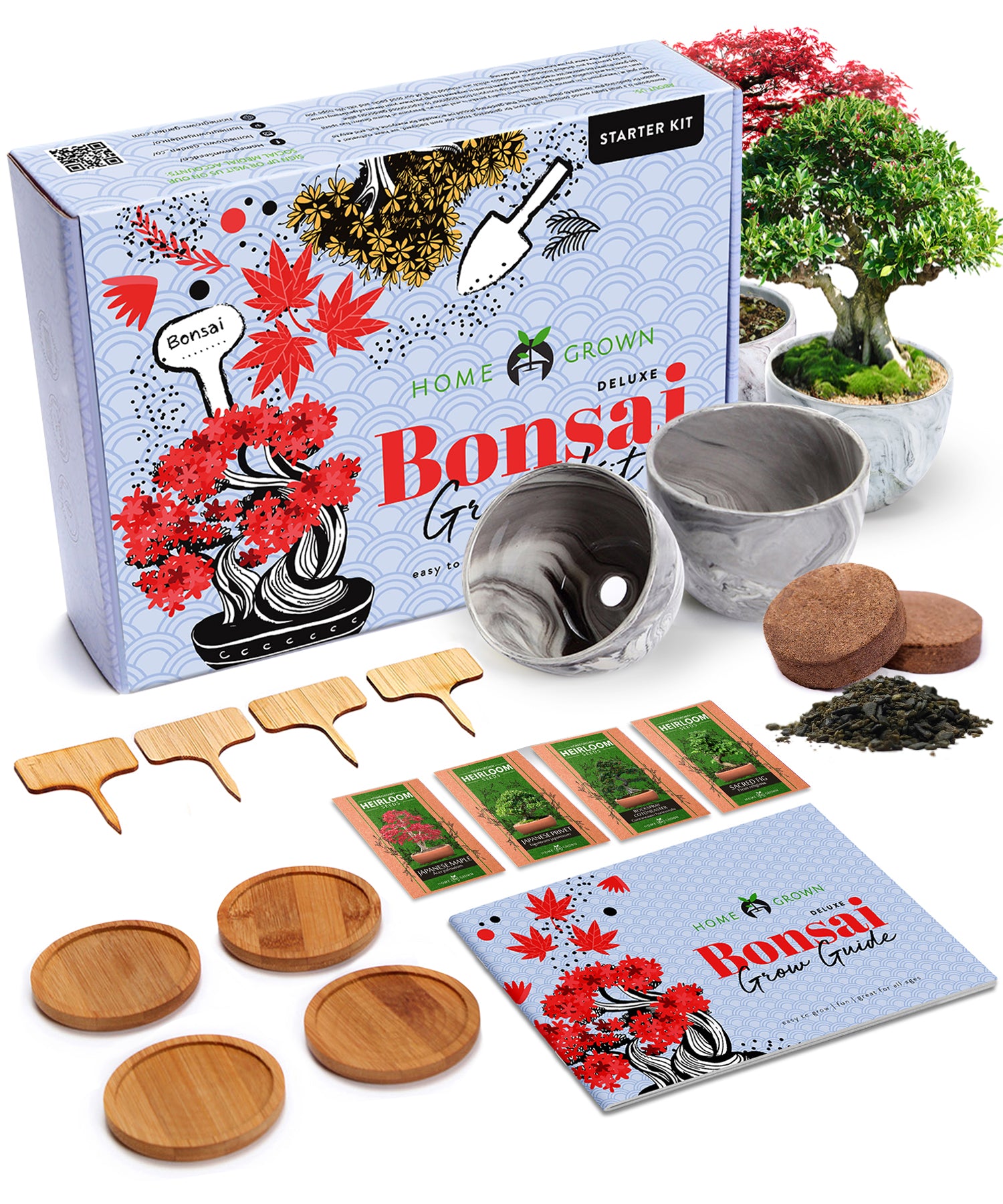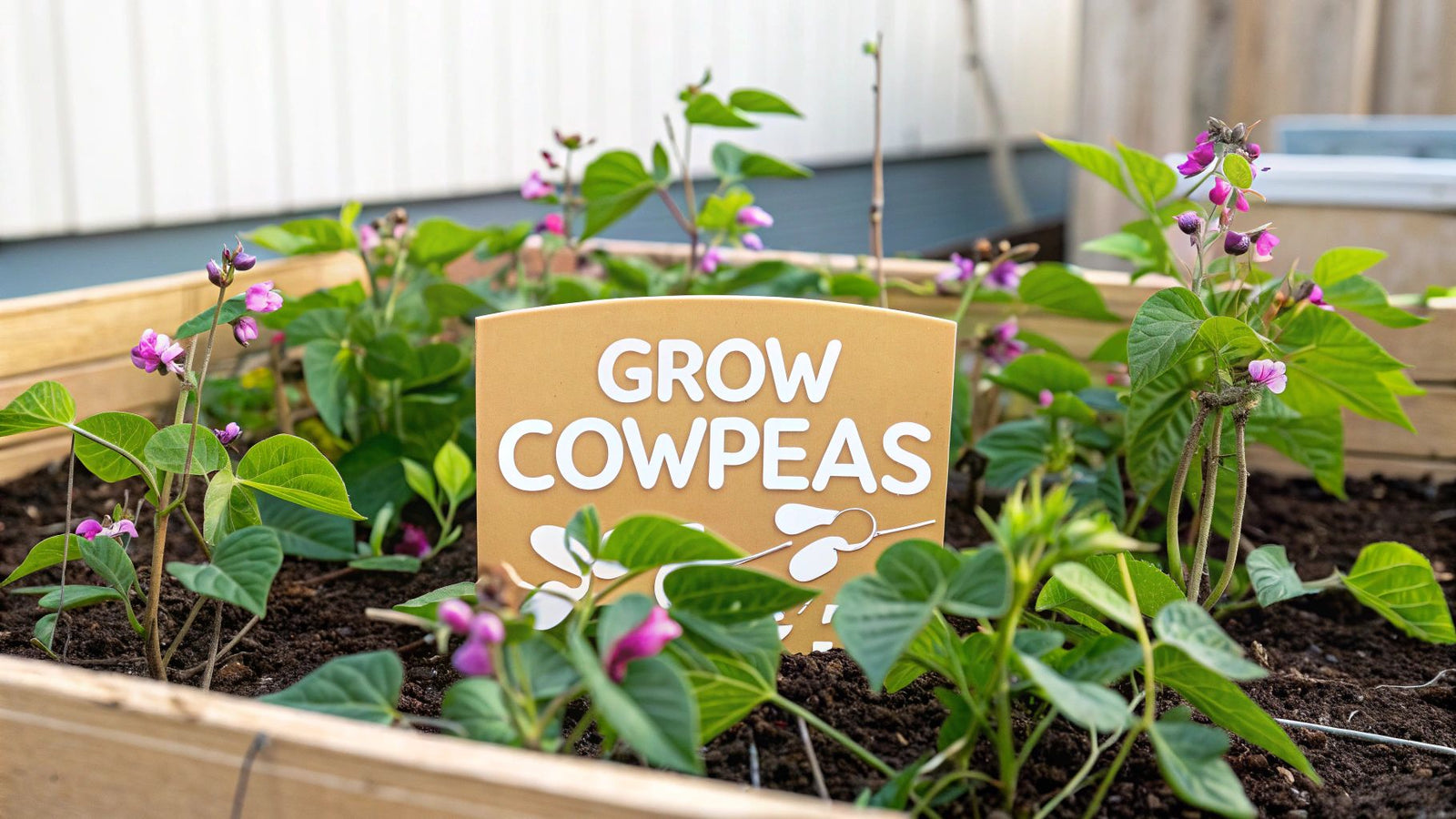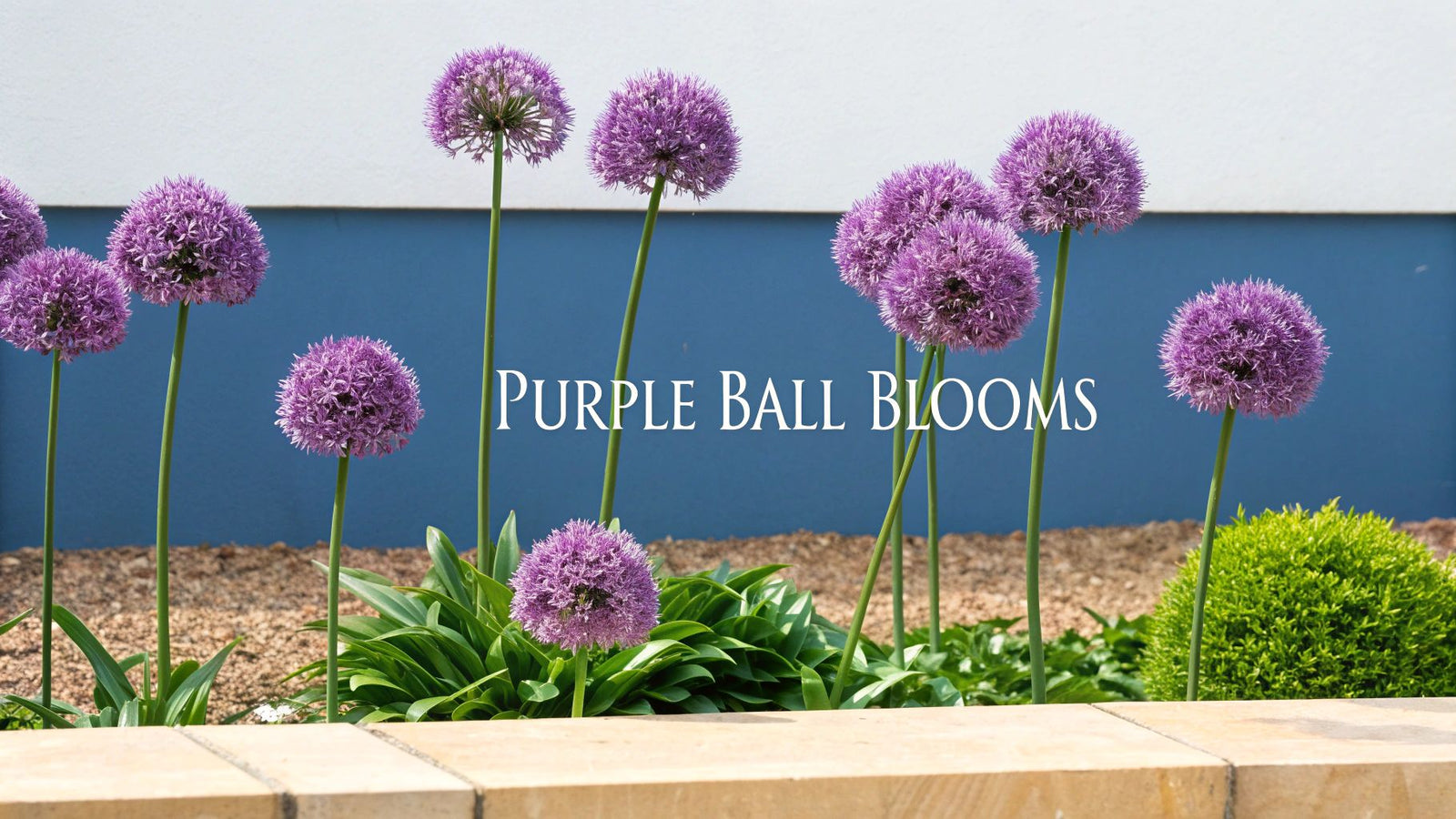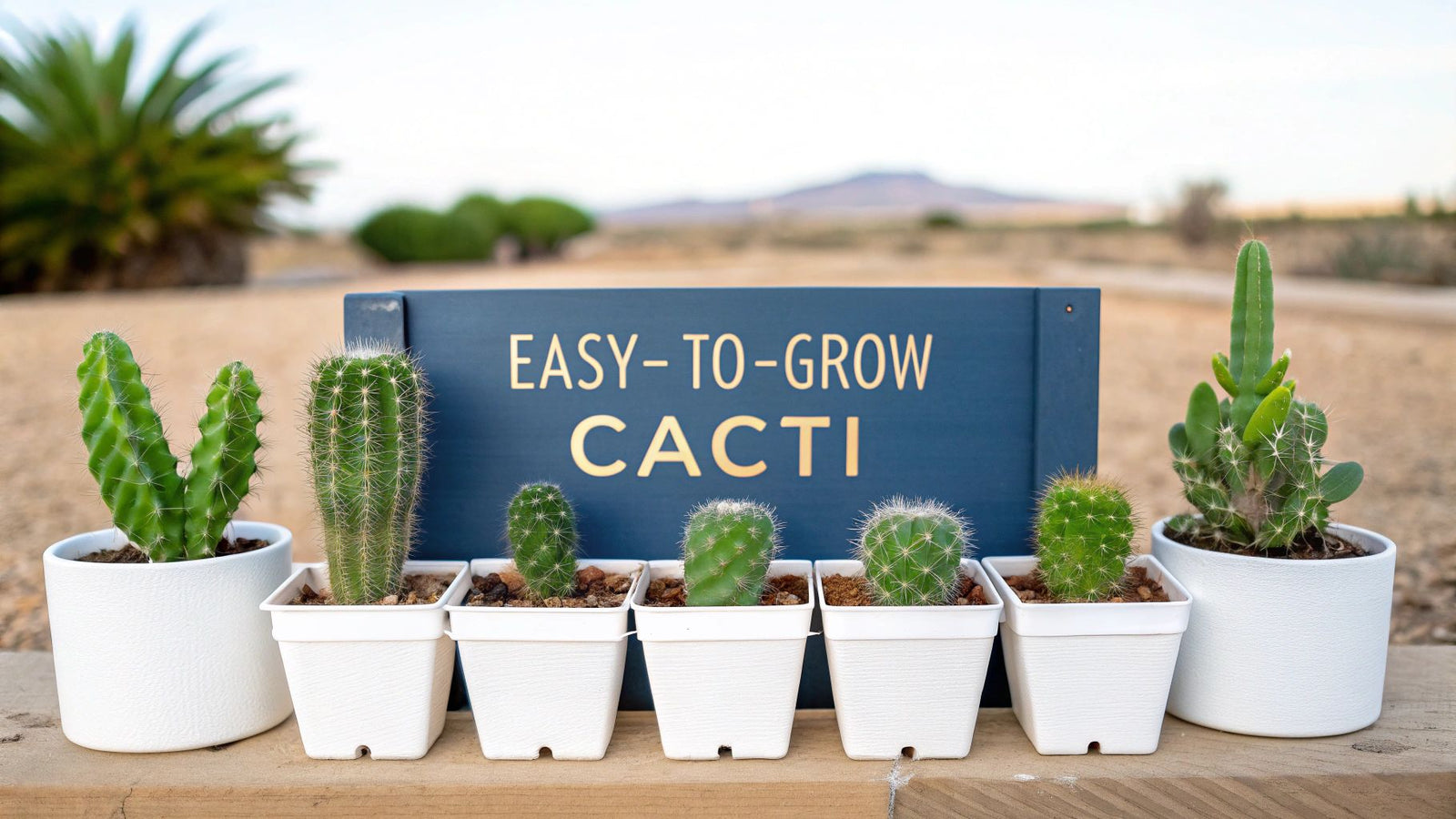
Ready to move beyond the generic 'spiky plant' label? The world of cacti is astonishingly diverse, featuring thousands of species with unique shapes, textures, and even stunning, vibrant flowers. For both new plant owners and seasoned horticulturists, being able to identify different types is the crucial first step toward providing proper care and truly appreciating their unique beauty. This is more than just a gallery; it's a practical identification and how-to guide.
This visual roundup delivers clear pictures and names of cactus varieties, helping you confidently distinguish between 11 of the most popular and iconic species you're likely to encounter. We'll dive into the specific features of each, from the mighty Saguaro to the festive Christmas Cactus, providing the essential details you need to recognize them instantly and grow them successfully.
Whether you're looking to add a new succulent to your collection, need to identify one you already own, or simply want to learn how to grow these resilient plants, you've come to the right place. Let's explore the distinct characteristics that make each of these 11 cacti a standout, giving you the knowledge to choose, grow, and admire them successfully.
1. Barrel Cactus (Ferocactus species)
The Barrel Cactus, belonging to the Ferocactus genus, is one of the most iconic and easily recognizable figures in the cactus world. Its classic, stout, and cylindrical shape, reminiscent of a barrel, makes it a staple in desert landscapes and a popular choice for those seeking to add dramatic structure to their gardens. This cactus is celebrated not just for its shape but also for its prominent, accordion-like ribs, which are lined with formidable and often colorful spines ranging from deep red to bright yellow.
How to Grow and Care for Barrel Cactus
Barrel Cacti are slow-growing but can achieve impressive heights of up to 10 feet over a lifespan that often exceeds a century. Their slow growth rate makes them manageable for container gardening, especially when young. To thrive, they require conditions that mimic their native desert habitat: abundant sunlight and minimal water. Placing them in a south-facing window or the sunniest part of your garden is crucial for their health.
When it comes to watering, the key is to be infrequent but thorough. Allow the soil to dry out completely between waterings to prevent root rot, a common issue for these desert dwellers.
Key Characteristics at a Glance
For those looking for a quick reference on this species, we've summarized its core features. This visual guide highlights the defining characteristics of the Barrel Cactus, from its distinct ribbed structure to its impressive longevity.
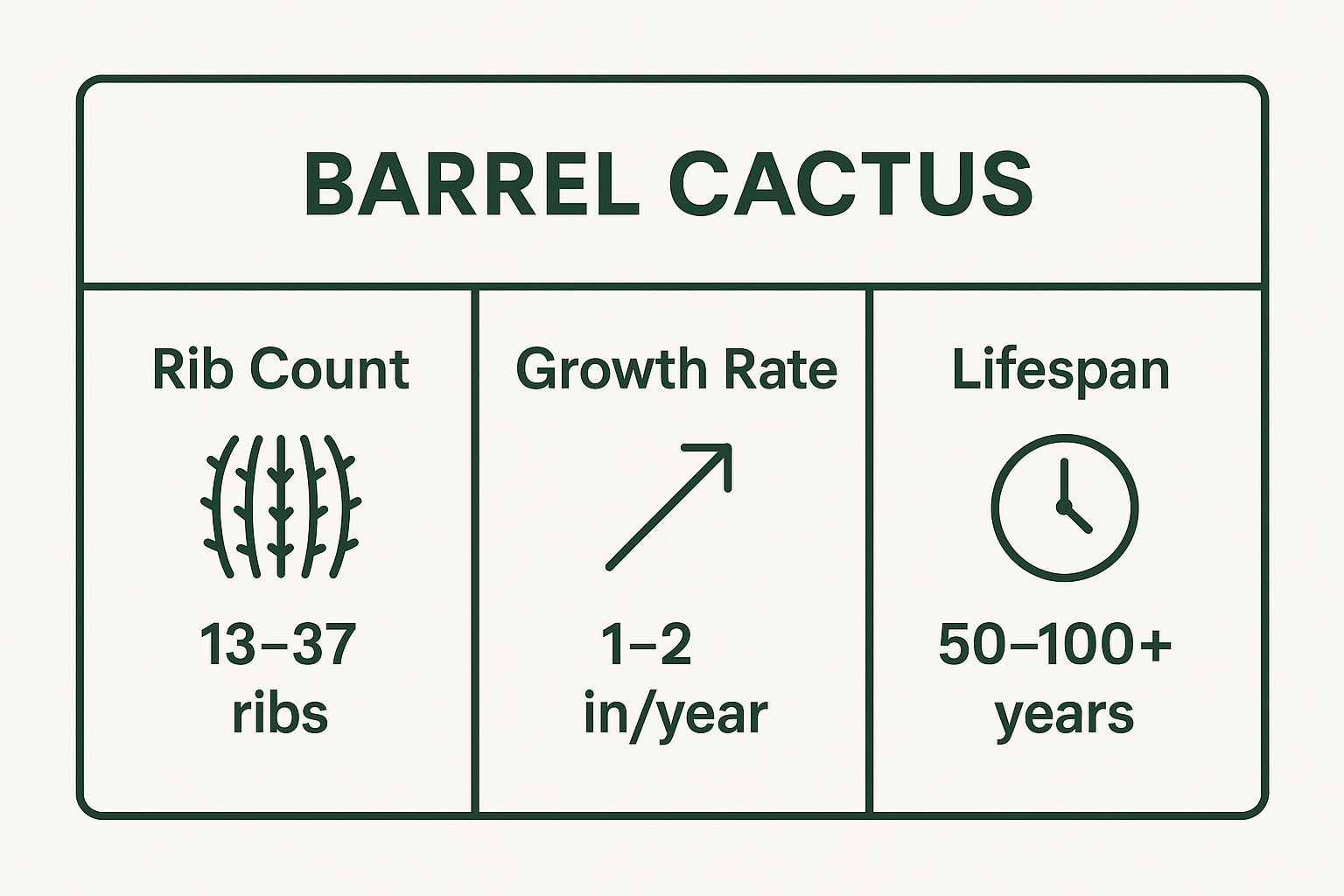
As the infographic shows, these plants are built for endurance, with a slow growth pattern that contributes to their long life and robust form. This makes them a long-term investment for any garden or collection. For enthusiasts interested in propagation techniques for cacti like this, you can learn more about cactus grafting to expand your collection.
2. Prickly Pear Cactus (Opunția species)
Perhaps the most widely distributed genus in the cactus world, the Prickly Pear, belonging to the Opuntia genus, is instantly recognizable by its flat, paddle-shaped segments called cladodes. These versatile cacti range from small indoor varieties to large outdoor specimens that can form extensive colonies. They are celebrated not only for their unique appearance but also for their edible fruits (tunas) and pads (nopales), making them a staple in cuisines like that of Mexico and a favorite among those looking for pictures and names of cactus with practical uses.
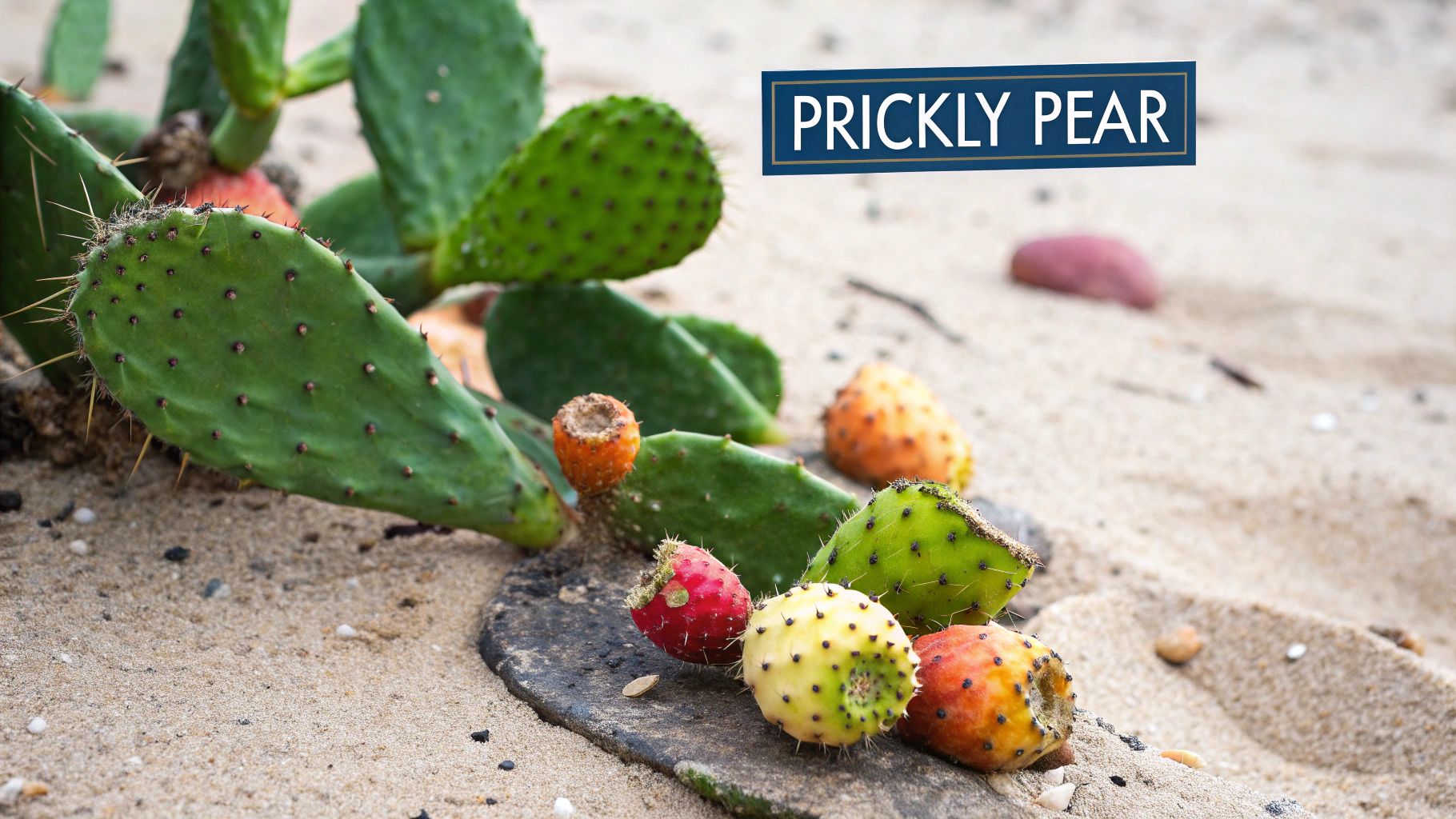
How to Grow and Care for Prickly Pear Cactus
Prickly Pears are generally fast-growing and incredibly resilient, thriving in conditions that mimic their native arid and semi-arid environments. They demand full sun and well-draining soil to prevent root rot, which is their most significant vulnerability. Whether planted in a garden as a xeriscaping feature or grown in a container, providing at least six hours of direct sunlight is key to promoting healthy growth and vibrant, colorful flowers that can range from yellow and orange to pink and red.
Propagation is remarkably simple: a single paddle can be cut, allowed to callus over for several days, and then planted to root a new plant. When handling any Opuntia, especially those with fine, hair-like spines called glochids, it is crucial to use tongs rather than gloves, as the glochids can easily penetrate fabric and lodge in the skin. The popular Opuntia microdasys, or Bunny Ears cactus, is a perfect example of a houseplant variety that requires this careful handling.
Key Characteristics at a Glance
For a quick reference on this diverse species, we have outlined its most important features. This guide highlights the defining characteristics of the Prickly Pear, from its unique paddle-like structure to its culinary significance.
- Distinctive Form: Composed of flat, fleshy pads (cladodes) that grow in segments.
- Edible Parts: Produces edible fruits (tunas) and pads (nopales), central to many cuisines.
- Defenses: Features both large spines and tiny, irritating glochids that detach easily.
- Flowering: Blooms with large, showy flowers in a variety of bright colors during the growing season.
- Adaptability: Highly drought-tolerant and can naturalize in various climates, from deserts to Mediterranean regions.
This cactus's combination of aesthetic appeal, hardiness, and utility has made it a favorite for Southwestern landscape architects and desert botanical gardens worldwide. Its distinct silhouette makes it one of the most photographed and recognizable cacti.
3. Christmas Cactus (Schlumbergera bridgessii)
The Christmas Cactus, from the Schlumbergera genus, is a beloved holiday houseplant that challenges the typical image of a cactus. It swaps desert origins for the tropical rainforests of Brazil, where it grows as an epiphyte on tree branches. This unique background explains its preference for humidity and indirect light. Its cascading, flattened, and segmented stems, combined with a spectacular burst of colorful flowers in winter, make it one of the most popular and gifted cacti, especially during the festive season.
How to Grow and Care for Christmas Cactus
Unlike its desert relatives, the Christmas Cactus thrives in conditions that mimic a forest canopy. It prefers bright, indirect light over harsh, direct sun which can scorch its delicate stems. Keeping the soil consistently moist but never waterlogged is key to its health. This plant is prized for its vibrant blooms, and triggering them requires a specific routine. Starting in the fall, provide 12 to 14 hours of complete darkness each day and cooler temperatures to encourage bud formation. Once buds appear, avoid moving the plant, as changes in light or temperature can cause them to drop.
Key Characteristics at a Glance
For those seeking a quick summary of this festive plant, we've outlined its core features. This guide highlights the defining traits of the Christmas Cactus, from its unique stem structure to its specific blooming requirements.
As the infographic illustrates, this cactus has a distinct care profile tailored to its tropical origins, which is crucial for achieving its famous holiday bloom. Its segmented stems are not only beautiful but also make it incredibly easy to share with others. For gardeners interested in creating new plants from their existing one, you can learn more about succulent propagation to easily multiply your collection.
4. Golden Barrel Cactus (Echinocactus grusonii)
The Golden Barrel Cactus, belonging to the Echinocactus grusonii species, is a globally celebrated and highly recognizable cactus. Often humorously called the "Mother-in-Law's Cushion," its perfectly spherical form and dense covering of bright, golden-yellow spines give it a striking geometric and sculptural appearance. This distinct look has made it a favorite among garden designers, photographers, and architects seeking to add a touch of modern desert elegance to their landscapes.
How to Grow and Care for Golden Barrel Cactus
While a stunning centerpiece, the Golden Barrel is a slow-growing cactus that eventually reaches up to 3 feet in diameter. It demands a location with full, direct sunlight to maintain its vibrant spine color and compact, spherical shape. As a native of Mexico, it is drought-tolerant and highly susceptible to overwatering, making excellent drainage paramount. A specialized cactus and succulent soil mix is essential for its health.
Watering should be minimal, especially during the dormant winter months when it should be kept almost completely dry. During its growing season in spring and summer, allow the soil to dry out fully before watering again. Be mindful of its placement; mature specimens are extremely heavy and difficult to move, so choose its permanent home wisely from the start.
Key Characteristics at a Glance
For those considering this iconic cactus, here is a summary of its main features. This visual guide helps identify the Golden Barrel Cactus by its defining traits, from its symmetrical, ribbed body to its brilliant crown of spines.
As highlighted in the infographic, its slow and steady development makes it a long-term fixture in any collection. Its architectural beauty ensures it remains a focal point in xeriscaped gardens, rockeries, and container displays for decades. For gardeners interested in nurturing these plants from the beginning, understanding how to grow cactus from seed can be a rewarding experience.
5. Saguaro Cactus (Carnegiea gigantea)
The Saguaro Cactus, from the Carnegiea gigantea species, is the ultimate icon of the American Southwest and what many picture when thinking of a desert landscape. These magnificent giants, famously dotting the Sonoran Desert, are a symbol of resilience and longevity, often living for over 150 years. Their classic form, with towering arms reaching toward the sky, makes them one of the most photographed and revered species among the different pictures and names of cactus.

How to Grow and Care for Saguaro Cactus
Saguaros are incredibly slow-growing, especially in their early years, a fact that makes cultivating them a true test of patience. It can take 50 to 70 years for a Saguaro to develop its first arm, and they may reach heights of 40 to 60 feet over their long lifespan. Due to their protected status and specific habitat needs, they are not typically grown as houseplants or in non-native garden settings. Their care is largely a matter of conservation in their natural environment.
For those fortunate enough to live in their native range and wish to cultivate one legally, they require full sun and extremely well-draining, rocky soil. Watering is rarely needed once established, as they are perfectly adapted to the arid climate of the Sonoran Desert.
Key Characteristics at a Glance
The Saguaro is a protected species, and its majestic presence is a cornerstone of its ecosystem. Understanding its features helps appreciate its role in the wild, from its slow maturation process to its importance for local wildlife.
- Longevity: Can live for 150-200 years, making them ancient sentinels of the desert.
- Arm Development: The iconic arms typically begin to appear only after the cactus is over 50 years old.
- Cultural Symbolism: A powerful symbol of Arizona and the American West, featured prominently in Western films and on state license plates.
- Legal Protection: It is illegal to harm or harvest a Saguaro in the wild, with strict regulations protecting this keystone species.
To truly witness their grandeur, visiting Saguaro National Park in Arizona offers an unparalleled experience. The park showcases thousands of these giants, and photographers often seek the "golden hour" light at sunrise or sunset to capture their stunning silhouettes.
6. Cholla Cactus (Cylindropuntia species)
The Cholla Cactus, part of the Cylindropuntia genus, is one of the most memorable and formidable plants of the desert southwest. It is often colloquially known as the "Jumping Cactus" because its barbed segments detach with the slightest touch, seemingly leaping onto unsuspecting passersby. This unique trait, combined with a densely spined, branching structure, makes the Cholla a fascinating subject for both gardeners and photographers, creating intricate, glowing silhouettes, especially when backlit by the rising or setting sun.
How to Grow and Care for Cholla Cactus
Cholla cacti vary greatly in form, from low-growing mats to tree-like structures like the Teddy Bear Cholla (C. bigelovii). They are exceptionally drought-tolerant and thrive in full sun and well-draining, sandy or gravelly soil. Like other desert natives, Chollas are adapted to arid conditions and are highly susceptible to root rot if overwatered. Water them deeply but infrequently, allowing the soil to dry out completely between sessions.
Due to their hazardous spines and easily detached segments, extreme caution is necessary. Always use long-handled tongs and thick, puncture-proof gloves for handling. When planting, choose a location far from walkways, play areas, or places where pets might roam to prevent painful encounters. A pair of pliers should be kept handy for safely removing any segments that attach to clothing or shoes.
Key Characteristics at a Glance
For those considering adding this striking cactus to their landscape, understanding its unique features is crucial. We've outlined the essential characteristics of the Cholla Cactus to provide a clear overview. This visual guide emphasizes its distinctive branching habit and the notorious nature of its spines.
As the infographic highlights, the Cholla's primary defense is also its primary method of propagation, as detached segments can easily root and form new colonies. This makes it a resilient and rapidly spreading plant in its native environment. For those interested in the diverse world of succulents, exploring different types can offer more low-maintenance options for your garden. You can discover various types of succulents to find the perfect fit for your home.
7. Mammillaria Cactus (Mammillaria species)
The Mammillaria genus, commonly known as Pincushion Cacti, is the largest in the cactus family, boasting over 200 distinct species. These cacti are cherished for their typically small, globular or cylindrical forms, intricate spine patterns, and the stunning rings of flowers that crown their tops. Instead of prominent ribs, their bodies are covered in tubercles, giving them a characteristic bumpy texture that makes them stand out among other pictures and names of cactus. This feature, combined with their compact size, makes them perfect for indoor collections and dish gardens.

How to Grow and Care for Mammillaria Cactus
Mammillaria cacti are generally easy to care for, making them an excellent choice for both beginners and seasoned collectors. They thrive in bright, indirect light, as intense direct sun can scorch their delicate skin. A spot near a sunny window with some protection during the hottest part of the day is ideal. Their shallow root systems mean they do well in wide, shallow pots with excellent drainage to prevent waterlogging.
Watering should be done thoroughly but infrequently. Wait until the soil has completely dried out before watering again, and significantly reduce watering during their dormant winter period. This careful approach is crucial to prevent root rot.
Key Characteristics at a Glance
For those wanting a quick overview of this diverse group, we’ve highlighted their core features. This visual guide points out the defining traits of Mammillaria, from their unique tubercled bodies to their prolific flowering habits. Popular examples include Mammillaria elongata (Ladyfinger Cactus) with its clustering golden spines and Mammillaria bombycina (Silken Pincushion) with its woolly appearance.
These cacti are not only visually appealing but also quite manageable due to their size and care requirements. Grouping several different species together can create a stunning display of varied textures and flower colors. For more guidance on nurturing these and other small plants, you can learn more about taking care of succulents indoors and outdoors to ensure your collection flourishes.
8. Easter Cactus (Hatiora gaertneri)
The Easter Cactus, scientifically known as Hatiora gaertneri, is a beloved holiday cactus cherished for its spectacular springtime floral display. Often confused with its Thanksgiving and Christmas Cactus relatives, this species stands out with its distinct bloom time and flower shape. Its flattened, segmented stems cascade gracefully, making it an excellent choice for hanging baskets, while its brilliant, star-shaped flowers add a burst of color to homes just in time for the Easter season.
This Brazilian native is an epiphyte, meaning it grows on other plants in its natural forest habitat rather than in the ground. This origin dictates its care requirements, which differ significantly from those of its desert-dwelling cousins. The Easter Cactus is prized not just for its beauty but also for its role as a living seasonal decoration, often featured in holiday displays and used in spring-themed photography. Its vibrant blooms make it a popular plant in greenhouse collections and a commercial favorite for the Easter plant market.
How to Grow and Care for Easter Cactus
Unlike desert cacti, the Easter Cactus thrives in conditions that mimic a tropical forest canopy. It prefers bright, indirect light over the harsh, direct sun that can scorch its delicate segments. A spot near an east-facing window is often ideal. Proper care is crucial for triggering its famous bloom cycle, which rewards patient gardeners with a stunning show.
To encourage the vibrant flowers to appear in spring, the plant needs a period of rest during the winter. Starting in January, it's essential to provide at least 12 hours of uninterrupted darkness each night and cooler temperatures. During its active growing season in spring and summer, maintain consistent moisture, watering when the top inch of soil feels dry. You can increase humidity by placing the pot on a pebble tray or using a room humidifier, creating an environment where this beautiful cactus will flourish.
Key Characteristics at a Glance
For a quick reference on this seasonal favorite, we've outlined its primary features. This guide highlights the defining characteristics of the Easter Cactus, from its unique segmented stems to its stunning star-shaped flowers.
As a key member of the holiday cactus group, the Easter Cactus’s care revolves around its specific light and temperature needs to initiate blooming. For those looking to dive deeper into caring for these unique plants, understanding their propagation can be a rewarding next step. You can discover how to propagate succulents to easily multiply your collection.
11 Cactus Species: A How-To Comparison Guide
| Cactus Type | Implementation Complexity 🔄 | Resource Requirements ⚡ | Expected Outcomes 📊 | Ideal Use Cases 💡 | Key Advantages ⭐ |
|---|---|---|---|---|---|
| Barrel Cactus | Moderate - needs excellent drainage and south-facing light | Low water needs; gloves needed for handling | Slow growth; long lifespan (50-100+ years) | Xeriscaping, distinctive garden focal points | Highly photogenic; drought tolerant; low maintenance |
| Prickly Pear Cactus | Easy - propagates from pad cuttings; tolerant of many soils | Minimal; beware of glochids | Rapid spread; edible fruits and pads | Food production, xeriscaping, wide climate adaptability | Edible parts; easy propagation; large flower display |
| Christmas Cactus | Intermediate - requires specific bloom triggers and humidity | Moderate watering; indirect light required | Attractive winter blooms; long-lived indoor plant | Holiday decoration; indoor gardening | Stunning winter flowers; easy propagation; non-spiny |
| Golden Barrel Cactus | Moderate - requires excellent drainage and cold protection | Low water needs; frost cloth may be needed | Slow growth; visually striking spherical form | Modern desert landscaping and photography | Perfect symmetry; golden spines; low maintenance |
| Saguaro Cactus | High - extremely slow growth; strict climate and legal rules | High space needs; legal restrictions | Iconic desert giant; lives 150-200 years | Conservation, iconic desert landscapes | Symbol of Southwest; wildlife habitat; long lifespan |
| Cholla Cactus | Moderate - requires careful handling to avoid spines | Low water needs; protective gear for handling | Moderate growth; aggressive spread in some climates | Wildlife habitat; dramatic photographic subject | Unique architecture; photogenic especially backlit |
| Mammillaria Cactus | Easy - small size and basic cactus care | Minimal; suitable for indoor pots | Prolific flowering; compact size | Indoor cultivation; macro photography | Compact; wide variety of patterns/colors; easy care |
| Easter Cactus | Intermediate - needs photoperiod control and higher humidity | Moderate water; indirect light | Spectacular spring blooms | Holiday/spring decoration; indoor collections | Unique star-shaped flowers; spring blooming |
Your 7-Step Guide to Growing Healthy Cacti
You have just journeyed through a remarkable gallery, exploring the distinct forms and identities of some of the most iconic cacti. Having seen the pictures and names of cactus species ranging from the imposing Saguaro to the cheerful Christmas Cactus, you are now equipped with a solid foundation in cactus identification. This knowledge is more than just trivia; it's the first and most critical step toward becoming a successful cactus cultivator or a more informed nature enthusiast.
Recognizing these 11 distinct types of cacti empowers you to understand their unique needs and appreciate their individual stories of survival and adaptation. The difference between a desert-dwelling Barrel Cactus and a tropical Schlumbergera isn't just aesthetic; it dictates their entire care regimen, from watering schedules to light exposure. This is where your journey truly begins.
Turning Identification into Actionable Care
With your newfound ability to identify these plants, the next logical step is to apply this knowledge practically. Here is a simple 7-step guide to help you succeed:
- Match the Environment: Use your identification skills to research the native habitat of your cactus. A Golden Barrel thrives in full sun and gritty soil, mimicking its arid origins, while an Easter Cactus prefers bright, indirect light and more humidity, reflecting its forested home.
- Choose the Right Pot: Select a container that is only slightly larger than the root ball. Cacti prefer to be snug in their pots. Most importantly, ensure the pot has drainage holes.
- Use Proper Soil: Standard potting soil holds too much moisture. Use a specialized cactus and succulent mix, or create your own by mixing potting soil with sand, perlite, or pumice to ensure fast drainage.
- Water Wisely: Misidentification often leads to improper watering, the most common reason cacti fail. For desert cacti, wait until the soil is completely dry before watering thoroughly. For tropical types like the Christmas Cactus, keep the soil lightly moist.
- Provide Adequate Light: Most cacti need several hours of bright light daily. A south-facing window is ideal for desert species, while an east-facing window works well for tropical ones.
- Fertilize Sparingly: During the growing season (spring and summer), you can feed your cactus with a diluted, low-nitrogen fertilizer once a month. Do not fertilize during the dormant winter period.
- Monitor for Pests: Keep an eye out for common pests like mealybugs and spider mites. If you spot any, treat them immediately with isopropyl alcohol on a cotton swab or a gentle insecticidal soap.
From Observer to Grower: Your Next Steps
You now possess the visual and nominal vocabulary to confidently navigate the world of cacti. The beauty of these resilient plants is that there is a species suited for almost every environment and skill level. Your exploration of the pictures and names of cactus in this guide is the perfect launching point for a rewarding horticultural adventure.
By moving beyond simple admiration to active cultivation, you engage with these plants on a deeper level. To ensure your cacti thrive and avoid common issues like root rot, understanding expert drainage solutions for yards is crucial for proper soil management, both in outdoor beds and container gardens. Embrace this knowledge, choose a cactus that speaks to you, and begin the fulfilling process of helping it thrive.
Ready to start your own cactus collection? Explore our curated selection of beginner-friendly cactus and succulent kits at Homegrown Garden. We provide everything you need, from healthy starter plants to the perfect soil mix, to bring these incredible specimens home today. Find your perfect prickly companion at Homegrown Garden and begin your growing journey with confidence.

